There are a lot of types of squash. The variety of squash makes cooking with them so much more fun! Remember the first time you opened a spaghetti squash? It probably led to all sorts of recipe and meal planning ideas for you and your family.
Squash is the name for plants that come from the Cucurbitaceae family. They’re best known for their different shapes, so much so that people often use them for seasonal decorations in addition to delicious meals.
Most of the time, we separate the types of squash by season. You have your summer squashes and winter squashes. But what about color? Orange is one of the most popular squash colors, and there are a lot of orange squashes to choose from!
Here are eleven types of orange squash to help broaden your horizons and try new things! First, let’s take a look at some of the most excellent types of squash you can grow or buy at your local grocery store.
Table of Contents
1. Banana Squash
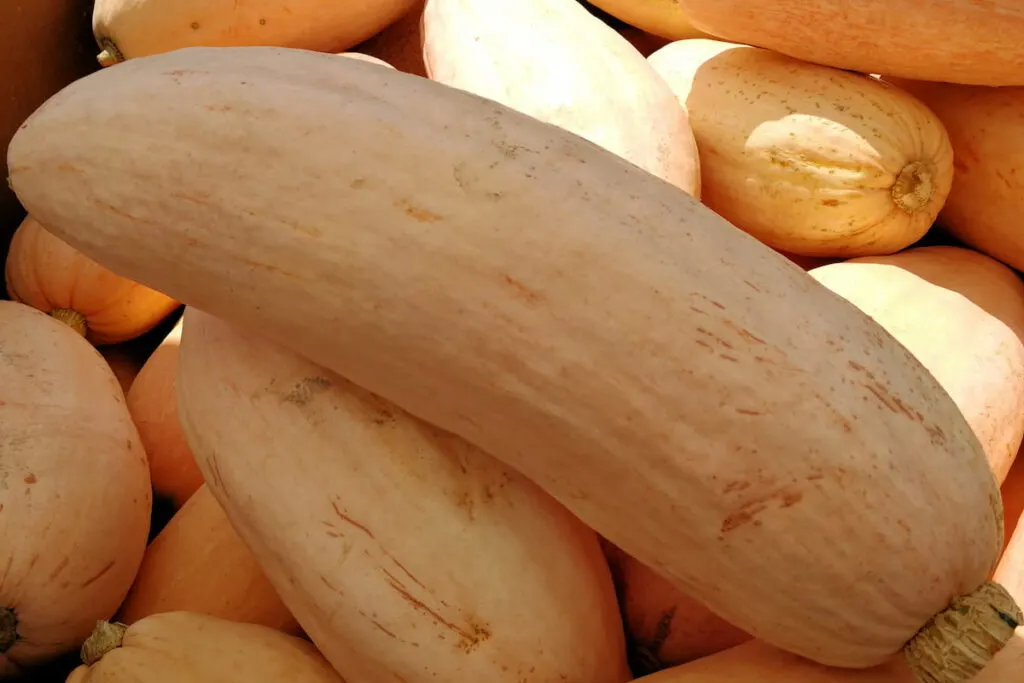
Banana squashes get their name from their shape. They probably would have been better named sweet potato squashes because they look a lot like sweet potatoes.
They are light orange-pink and can grow up to three feet long. They have thick skin that can’t be eaten. But, once you cook them, the flesh is delicious.
These squashes are available all year, but they’re best enjoyed in winter and fall.
2. Carnival Squash
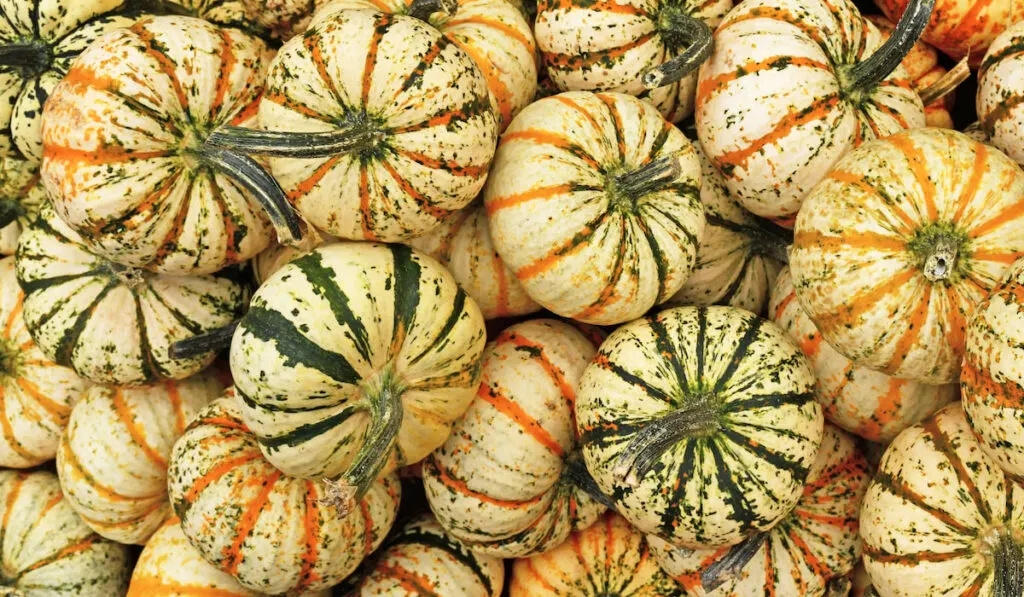
Carnival squashes are some of the most popular decorative squashes. They’ll go great on the doorstep or your kitchen countertops. People love them because they come in orange with yellow, white, and green accents, which makes them a striking addition to any room.
These squashes aren’t just lookers. They taste great too! Once you’re done having them as a centerpiece on your table, you can cook them to taste their buttery inner flesh. They’re perfect for roasting or to grill alongside steaks.
3. Pumpkins
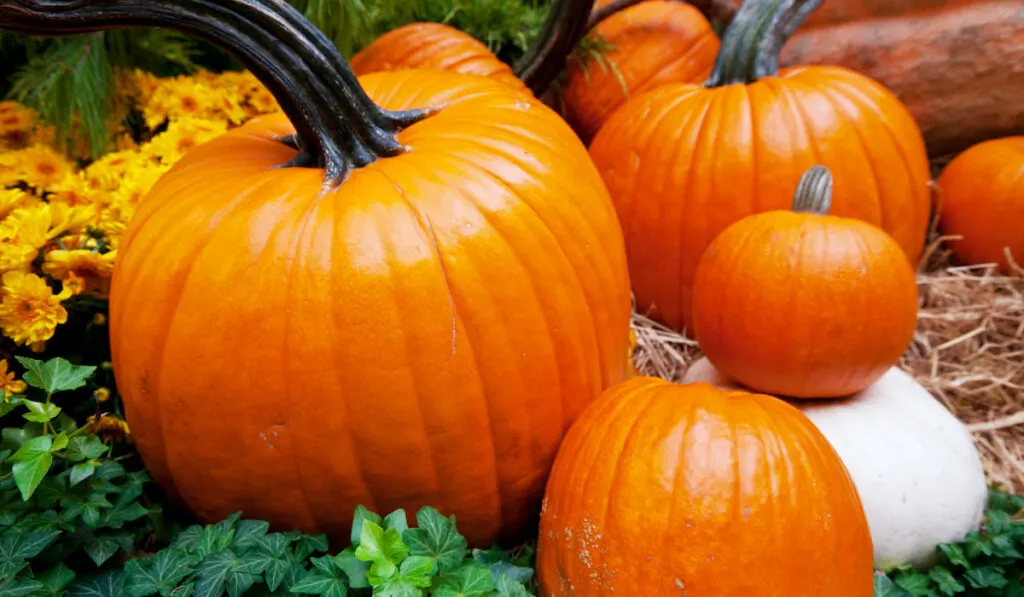
Pumpkins are squashes! These are likely the first type of squash most Americans encounter. They’re so popular that many people don’t lump them in together with butternut squashes, etc., but they’re still part of the same family.
Pumpkins, of course, are most popular around Halloween, where they are used as decorations and food. During the autumn season, we love eating pumpkin pie and pumpkin-flavored treats.
Pumpkins can come in all shapes and sizes. They even come in various colors, though most of them are a beautiful orange hue.
4. Butternut Squash

The butternut squash is deservedly running for the title of being one of the most popular edible squashes in the world! So anytime you’re walking in the grocery store and see pre-prepared squash, there is a good chance it is butternut squash.
The reason is because people love the flavor. It has a sweet, earthy flavor that goes well in stews, veggie stir-fries, and many other dishes.
People love adding grilled butternut squash to salads and pasta. Or you can bake the squash and sprinkle it lightly with salt and pepper for a delicious snack.
They’re most in-season during the fall, but you can usually find them in stores all year.
5. Crookneck Squash
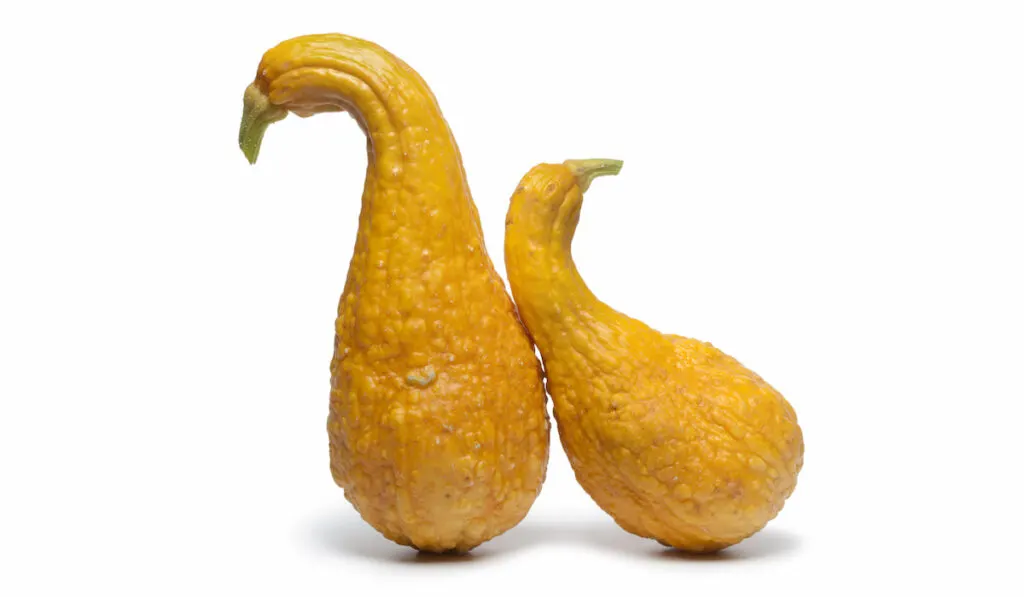
If you took a zucchini, turned it orange, and placed bumps all over it, you’d get a crookneck squash.
This is a winter squash that belongs to the Cucurbita pepo group. Many people love to use these squashes as accompaniments for centerpiece fall squashes. They are more common in yellow and green, but sometimes you can find them in orange.
6. Acorn Squash
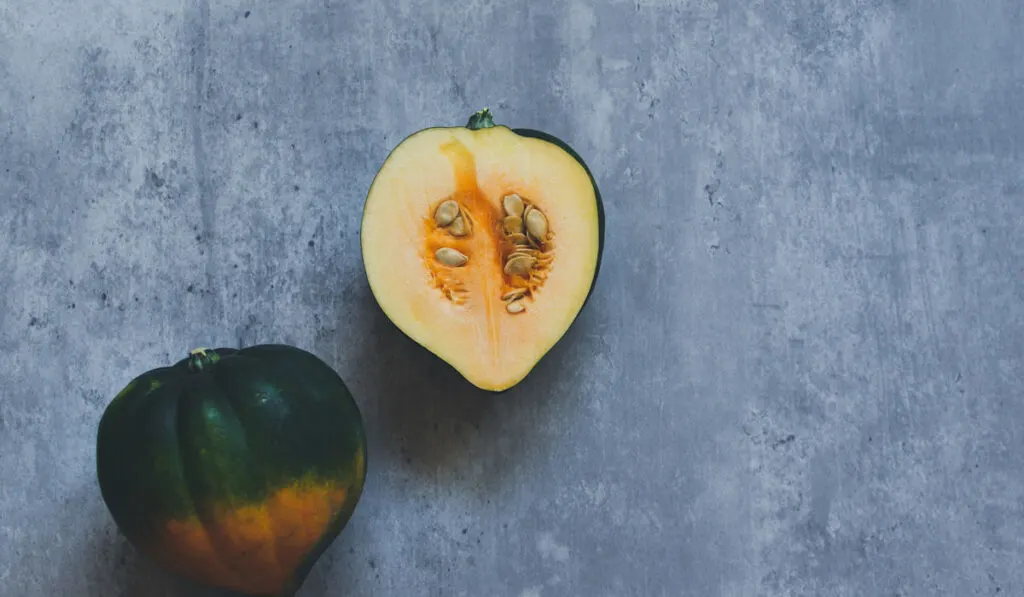
Acorn squashes get their name from their shapes. They look like oversized acorns with orange and yellow exteriors. They are rounded and small, so they’re lovely as decorations or to grow in a backyard garden.
You can eat pretty much any acorn squash, but solid orange squashes tend to be more fibrous and harder to eat.
Try getting some with yellow and green on them for a better dining experience. When you scoop out the seeds, the shape makes a nice bowl, so a lot of cooks stuff them with sausage and other vegetables before baking them.
7. Spaghetti Squash

Spaghetti squash has always been popular, but it started to get way more popular when people started staying away from pasta and other grains. As a result, spaghetti squash became one of the best alternatives to eating traditional noodles.
One of the best things about spaghetti squash is that the shape makes meal prep so easy! You have to slice them in half, bake them, and then douse them in pasta sauce or whatever else you’re cooking with. So, you get a delicious meal in a ready-made bowl!
Spaghetti squash has fewer calories than pasta, and you can store the squash for weeks after cooking it.
8. Delicata Squash
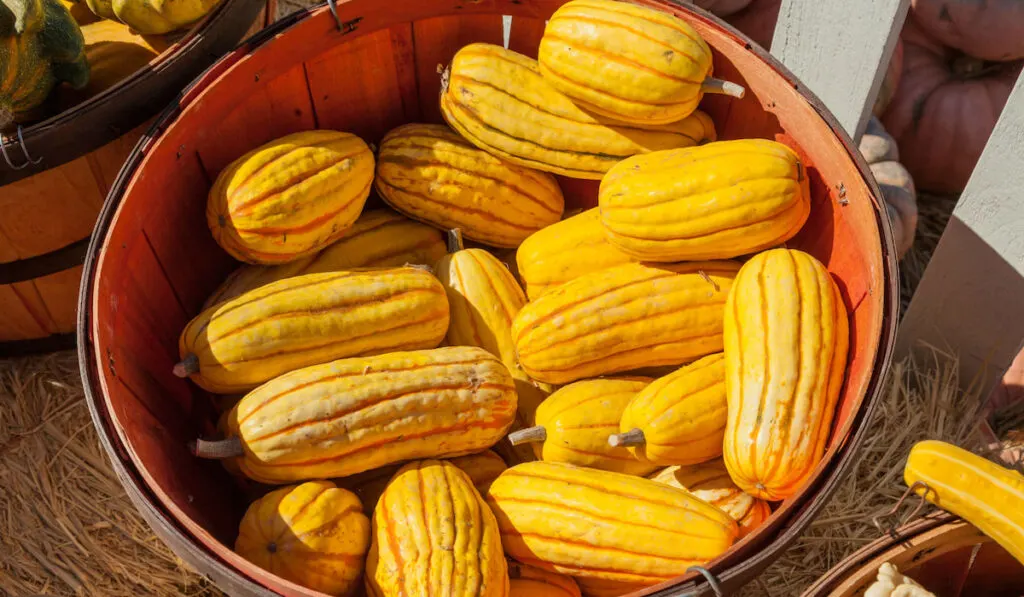
Delicata squash almost looks like a cocoa bean. It has a long cylinder shape with lighter yellow between orange ridges. Some of them also have thin green stripes on the outside.
This is a nice choice for edible squash because you can eat the skins after cooking. No peeling is required.
You can roast it or grill it for the best results. Flavor it with sauces or just some salt and pepper. It’s also a good choice if you want to try stuffing squash before you bake it.
9. Kabocha Squash

Almost all of the Kabocha squash is green on the outside. You’ll find some of them with orange flecks and an orange stem, but cutting them open reveals thick, beautiful orange flesh. The deep orange color of the flesh makes it a fantastic option for baking.
It’s a Japanese squash primarily grown in Asia and the U.S. The sweetness of the flesh makes it perfect for mashed squash or serving up as seasoned slices with your favorite Japanese meal.
10. Sweet Dumpling Squash

These small squashes are wonderful for baking stuffed squash and other delicious recipes. They have white and green skins, but the inside flesh is a gorgeous orange.
A lot of people say sweet dumpling squash tastes like corn or sweet potatoes, depending on what time of year you get them. You can store them for months in your pantry, which is terrific for people who plan their meals well in advance.
You can eat the skin if you cook it long enough and toss these into recipes instead of pumpkins.
11. Honeynut Squash
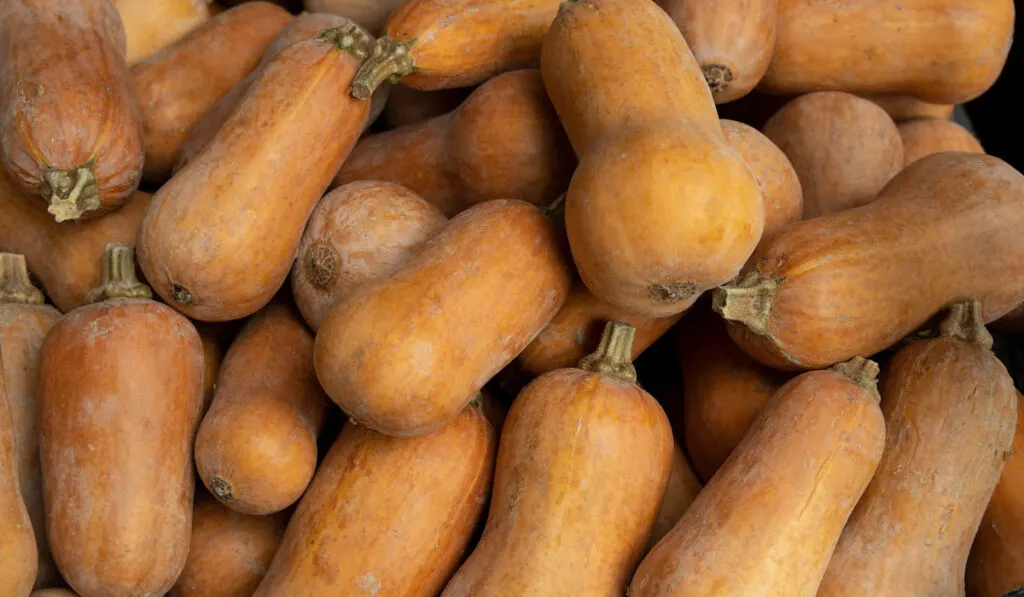
Given the popularity of butternut squash, it’s no wonder why so many people love honeynut squashes. These are miniature butternut squashes that farmers developed by breeding smaller butternut squashes.
In recent years, they’ve become quite popular in restaurants, and you’ll find them sliced into salads or on your favorite veggie sandwich.
The smaller size often makes for a more intense flavor compared to butternut squashes. Other than the size, however, they look exactly the same.
These are just eleven types of orange squash, but there are dozens more. Some of them are big, and others are small. Certain squashes have edible skins, while others must be cooked and skinned before eating.
Overall, squash is a very healthy food that’s affordable, filling, and low in calories. If you’re interested in adding more squash to your life, this list is a great place to start! Buy some as decorations and cook the rest for the family for your next meal!
